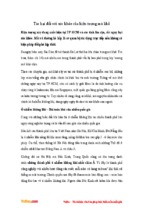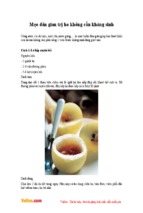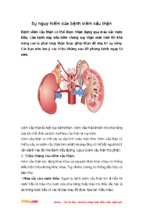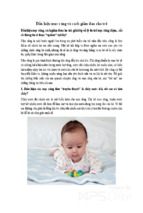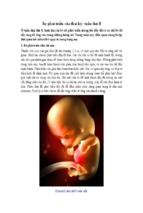The history of warfare parallels the history of medical advances. In the field of anesthesia, wars have resulted in marked technical, chemical, and procedural advances, including the first battlefield use of inhalational anesthesia (MexicanAmerican War), first widespread use of anesthetics and inhalers for the application of inhaled anesthetics (US Civil War), use of the eye signs chart for safe monitoring by lay practitioners (World War I), development of specific short course training centers for predeployment anesthesia training (World War II), and the establishment of military anesthesia residency programs in response to shortages of specialty trained doctors (Korean War). The current wars in Iraq and Afghanistan are no exception to this historical trend (Figure 11), and perhaps the most significant advance resulting from these conflicts is the Military Advanced Regional Anesthesia and Analgesia Initiative (MARAA).
Mi
l
i
t
ar
yAdvanc
e
dRe
gi
onal
Ane
s
t
he
s
i
aandAnal
ge
s
i
a
M
A
R
A
A
1. THE MILITARY ADVANCED REGIONAL
ANESTHESIA AND ANALGESIA INITIATIVE:
A BRIEF HISTORY
“He who would become a surgeon should join the army
and follow it.”
—Hippocrates
The history of warfare parallels the history of
medical advances. In the field of anesthesia, wars
have resulted in marked technical, chemical, and
procedural advances, including the first battlefield
use of inhalational anesthesia (Mexican-American
War), first widespread use of anesthetics and inhalers for the application of inhaled anesthetics
(US Civil War), use of the eye signs chart for safe
monitoring by lay practitioners (World War I), development of specific short course training centers
for predeployment anesthesia training (World War
II), and the establishment of military anesthesia
residency programs in response to shortages of
specialty trained doctors (Korean War). The current
wars in Iraq and Afghanistan are no exception to
this historical trend (Figure 1-1), and perhaps the
most significant advance resulting from these conflicts is the Military Advanced Regional Anesthesia
and Analgesia Initiative (MARAA).
MARAA is the collaborative effort of likeminded anesthesiologists who perceived a need
for improvement in battlefield pain management.
Deployed military anesthesiologists recognized a
disconnect between battlefield and civilian analgesic
care that needed to be bridged. As one provider put
it, “pain control in Baghdad, 2003, was the same as
in the Civil War—a nurse with a syringe of morphine.” Colonel (Retired) John Chiles was the first
to voice the potential benefit of increasing the use of
regional anesthesia in the Iraq war. With Lieutenant
Colonel Chester Buckenmaier, Chiles started the
Army Regional Anesthesia and Pain Management
Initiative in 2000. Dr Buckenmaier administered
Figure 1-1. As Long As There Is War, There Will Be Wounded, by Lieutenant Michael K. Sracic, MD, MC, US Navy, 2008.
the first continuous peripheral nerve block in
Operation Iraqi Freedom on October 7, 2003.
Upon his return, Buckenmaier, Chiles, Lieutenant
Colonel Todd Carter, and Colonel (Retired) Ann
Virtis created MARAA, following in the tradition of the Anesthesia Travel Club created by John
Lundy to rapidly disseminate research advances to
practitioners.
MARAA’s purpose is to develop consensus recommendations from the US Air Force, Army, and
Navy anesthesia services to implement improve-
ments in medical practice and technology that will
promote regional anesthesia and analgesia in the
care of military beneficiaries. The organization also
serves as an advisory board to the individual service anesthesia consultants to the surgeons general
(see the MARAA charter, the attachment to this
chapter). Initial support was provided indirectly
by the public’s demand for better pain control for
wounded soldiers and directly via congressional
funding through the John P Murtha Neuroscience
and Pain Institute, the Telemedicine and Advanced
1
1 MARAA: A BRIEF HISTORY
TABLE 1-1
ATTENDEES AT THE FIRST MEETING OF
THE MILITARY ADVANCED REGIONAL
ANESTHESIA AND ANALGESIA INITIATIVE
COL John Chiles, Army
Service Consultant
LTC Chester Buckenmaier,
Army
Service Consultant designee;
MARAA President
Lt Col Todd Carter, Air
Force
Service Consultant
CAPT Ivan Lesnik, Navy
Service Consultant
CDR Dean Giacobbe,
Navy
Service Consultant designee
MAJ Peter Baek, Air Force
Service Consultant designee
Technology Research Center, and the Henry M
Jackson Foundation. The first MARAA meeting was
held in February 2005 (Table 1-1).
As the service primarily responsible for transporting wounded soldiers from the battlefield to the
United States, the Air Force supported the initiative
and almost immediately issued a memorandum
outlining specific directives to Air Force providers
based on MARAA recommendations. By October
2006 MARAA meetings had grown to include over
30 senior military anesthesiologists. Nursing support
of anesthesia was recognized early on, and a certified registered nurse anesthetist from each service
was added to the board in April 2006. Initial meetings focused on approval of the Stryker PainPump
2 (Stryker; Kalamazoo, Mich) for use on Air Force
military aircraft and the need for patient-controlled
analgesia pumps on the battlefield and on evacuation aircraft. The organization developed a series of
training modules and consensus recommendations
on pain management for anesthesiologists preparing for deployment (available at: www.arapmi.org).
2
MARAA also spearheaded the regional anesthesia
tracking system (RATS), designed to provide realtime continuous pain management information
on patients from Iraq to the United States. RATS is
currently being integrated into the Army’s online
Theater Medical Data Store as part of the military
computerized patient record. These initiatives have
led to greater pain control for wounded soldiers, and
their success has been widely recognized in professional and lay journals from Newsweek to Wired
magazine.
The need for comprehensive pain management
has recently been recognized at the national legisla-
tive level with the introduction (and passage by the
House May 26, 2008) of HR 5465, the Military Pain
Care Act of 2008, which will require that all patients
at military treatment facilities be assessed and managed for pain throughout their recovery period. In
addition, all patients must be provided access to
specialty pain management services, if needed. If the
bill is passed, MARAA is in position to organize its
implementation.
Already, MARAA is expanding its role beyond
improving the care of military beneficiaries by encouraging civilian attendees at its Annual Comprehensive Regional Anesthesia Workshop (Figure 1-2),
Figure 1-2. MAARA Annual Workshop faculty; l-r: Scott M Croll, Alon P Winnie, Chester Buckenmaier.
held at the Uniformed Services University of the
Health Sciences in Bethesda, Maryland. This year
marks the 7th year of the workshop, directed by Dr
Buckenmaier and taught by senior anesthesiologists from around the nation. This year’s faculty
included doctors Alon P Winnie, Northwestern
University; Andre P Boezaart, University of Florida;
John H Chiles, former anesthesiology consultant to
the Army surgeon general and currently at INOVA
Mount Vernon Hospital; Laura Lowrey Clark,
University of Louisville; Steven Clendenen, Mayo
Clinic; Scott M Croll, Uniformed Services University and Walter Reed Army Medical Center; John M
Dunford, Walter Reed Army Medical Center; Carlo
D Franco, Rush University; Ralf E Gebhard, University of Miami; Roy A Greengrass, Mayo Clinic;
Randall J Malchow, Brooke Army Medical Center;
Karen C Neilsen, Duke University; Thomas C Stan,
Far Hills Surgery Center; and Gale E Thompson,
Virginia Mason Medical Center.
Although the recognition of MARAA’s success
has so far been directed to its immediate achievements—improved and systematic pain control for
wounded soldiers—its ultimate contribution may
be broader in scope. Patient care is a multispecialty
team effort that MARAA recognizes. Therefore,
MARAA solicits, evaluates, and appreciates input
from other physician subspecialists and from nursing providers; much of the spring 2006 meeting
was devoted to astute flight nurse observations
collected by Lieutenant Colonel Dedecker, a US
Air Force nurse in charge of the Patient Movement
Safety Program. MARAA meetings remain open to
any person interested in attending, and all meeting
notes, data, and recommendations are freely available. As impressive as MARAA’s contributions to
patient care have been, history may view its greater
contribution as a modern model of how a small
group of persons with vision and energy can dramatically improve an entire field of care.
3
MARAA: A BRIEF HISTORY 1
board to the individual service anesthesia consultants to
the surgeons general.
ARTICLE II: MANAGEMENT
The organization will consist of the anesthesiology
consultant of each military service (or their designee)
and a second appointee by each service anesthesiology
consultant (six member board). Each member of
the organization has one vote on issues that require
agreement/collaboration between services. All decisions
will be made by a simple two thirds majority. Issues
that fail to obtain a two thirds majority consensus will be
tabled and re-addressed at the next meeting called by the
President of the organization.
ARTICLE III: DIRECTORS
CHARTER OF THE
MILITARY ADVANCED REGIONAL
ANESTHESIA & ANALGESIA
JUNE 2005
ARTICLE I: NAME AND OBJECT
1. Name. The name of the organization is “Military
Advanced Regional Anesthesia & Analgesia (MARAA).”
2. Object. The object of the organization is the promotion
of regional anesthesia and improved analgesia for
military personnel and dependents at home and on the
nation’s battlefields.
3. Purpose. The organization will work to develop
consensus recommendations from the Air Force, Army,
and Navy anesthesia services for improvements in
medical practice and technology that will promote
regional anesthesia and analgesia in the care of military
beneficiaries. The organization serves as an advisory
The organization will select a President of the
organization from organization members each fiscal
year by simple majority vote. The President will
be responsible for soliciting meeting issues from
members and setting meeting agendas. The President
will be responsible for generating organization
position ‘white papers’ on decisions made by the
26
organization. The position white papers
will provide
each service anesthesia consultant with collaborative
recommendations for issues considered by the
organization. The President can assign the writing of
decision papers to committee members. The president
will have final editorial authority over any white
paper recommendations submitted to the service
anesthesiology consultants.
2. Special Meetings. The president can call for a special
meeting by organization members on issues requiring
prompt attention.
3. Conduct of Meetings. Meetings will be presided over
by the President or, in the absence of the President, a
member of the organization designated by the President.
4. Meeting Agenda. The President will provide members
with the meeting agenda one week prior to scheduled
meetings. Members may add new items to the agenda
during meetings with the President’s request for ‘new
business’. Meetings will be concluded with review of old
business.
ARTICLE V: ORGANIZATION SEAL
The organization seal is represented at the head of this
document.
Ammendment 1 (6 April 2006): The voting MARAA
membership will include one CRNA vote per service.
Representatives will be chosen by each service’s
anesthesiology consultants. There will now be 9 total
votes (2 physician and 1 CRNA per service).
ARTICLE IV: MEETINGS
1. Meetings. The organization will meet twice yearly.
One formal meeting will be at the Uniformed Services
Society of Anesthesiology meeting during the American
Society of Anesthesiology conference. A second meeting
will be scheduled during the Spring. Meetings will be
coordinated by the organization president. Organization
members can send proxies to attend meetings in
their place (proxy voting is allowed) if approved by
that member’s service anesthesiology consultant.
Teleconferencing is an acceptable means of attending a
meeting. Meetings will only be held when a quorum
of members (or their proxies) are available. A quorum
will be defined as a majority of voting members with
representation from each service.
4-
2. PERIPHERAL NERVE BLOCK
EQUIPMENT
INTRODUCTION
The safe and successful application of regional
anesthesia in patients requires specialized training and equipment. In 2005, guidelines for regional
anesthesia fellowship training were published in
the journal Regional Anesthesia and Pain Medicine.
The guidelines were a collaborative effort of a group
of North American regional anesthesia fellowship
program directors who met to establish a standardized curriculum. An important part of this document is the categorization of regional anesthetic
procedures into basic, intermediate, and advanced
techniques. The Walter Reed Army Medical Center
(WRAMC) regional anesthesia fellowship program
has adopted this categorization as well as the published guidelines (Table 2-1).
This manual will focus on intermediate and advanced regional anesthesia techniques and acute
pain therapies, which may not be included in
routine anesthesia training. Some basic techniques
are covered as well (with the exception of neuraxial
anesthesia). The primary purpose of this manual is
to serve as a guide for WRAMC resident and fellow
anesthesiologists during their regional anesthesia
and acute pain rotations. The facility, equipment,
and staffing solutions used at WRAMC may not be
entirely workable at other institutions; however, the
editors are confident that other clinicians can benefit
from this systematic approach to regional anesthesia
and acute pain medicine.
Contemporary regional anesthesia increasingly
relies on sophisticated equipment, as providers
strive for accurate and safe methods of needle placement and anesthetic delivery. This chapter will
review the equipment used at WRAMC as well as
on the modern battlefield in the successful performance of regional anesthesia. Note: The equipment
displayed in this chapter is for illustration purposes only
and should not be considered an endorsement of any
product.
TABLE 2-1
CLASSIFICATION OF REGIONAL ANESTHESIA TECHNIQUES AT WALTER REED ARMY MEDICAL
CENTER
Basic Techniques
Intermediate Techniques
Anesthesia providers who have completed
Should be familiar to anesthesia providers
an accredited anesthesia program should be who have completed a supervised
familiar with these techniques.
program in regional anesthesia and
have demonstrated proficiency in these
techniques (usually 20–25 blocks of each
type).
• Superficial cervical plexus block
• Deep cervical plexus block
• Axillary brachial plexus block
• Interscalene block
• Intravenous regional anesthesia
(Bier block)
• Supraclavicular block
• Wrist block
• Infraclavicular block
• Digital nerve block
• Sciatic nerve block: posterior
approach
• Intercostobrachial nerve block
• Genitofemoral nerve block
• Saphenous nerve block
• Popliteal block: all approaches
• Ankle block
• Suprascapular nerve block
• Spinal anesthesia
• Intercostal nerve block
• Lumbar epidural anesthesia
• Thoracic epidural anesthesia
• Combined spinal-epidural
anesthesia
• Femoral nerve block
REGIONAL ANESTHESIA AREA
Regardless of the practice environment (military
care level III through IV), a designated area for the
application of regional anesthesia techniques outside
of the operating room will enhance block success.
This alternative location for nerve block placement
will prevent unnecessary operating room delays,
allow additional time for long-acting local anesthetics to “set up,” and allow the provider to assess the
quality of the nerve block prior to surgery. Other
advantages of a regional anesthesia area include
Advanced Techniques
Should be familiar to anesthesiologists with
advanced or fellowship training in regional
anesthesia appropriate for a subspecialist
consultant in regional anesthesia.
• Continuous peripheral nerve blocks:
placement and management
• Ultrasound guided regional
anesthesia
• Thoracolumbar paravertebral blocks
• Lumbar plexus block
• Sciatic nerve block: anterior
approach
• Obturator nerve block
• Cervical epidural anesthesia
• Cervical paravertebral block
• Maxillary nerve block
• Mandibular nerve block
• Retrobulbar and peribulbar nerve
blocks
reduced anesthesia turnover times and improved
patient-anesthesiologist relationships. Finally, the
regional anesthesia area greatly enhances resident
education by providing an instructional environment free from the pressures and distractions of a
busy operating room.
The regional block area should have standard
monitoring, oxygen, suction, airway, and emergency hemodynamic equipment. Certain military
practice environments will necessitate adjustments
or alternatives to this equipment list. Advanced
cardiac life support capability and medications
5
2 PERIPHERAL NERVE BLOCK EQUIPMENT
should be readily available as well as Intralipid
(KabiVitrum Inc, Alameda, Calif). Recent data have
shown Intralipid to be an effective therapy for
cardiac arrest related to local anesthetic toxicity (see
Table 3-2 for Intralipid dosing).
PATIENT CONSENT FOR
REGIONAL ANESTHESIA
As with any medical procedure, proper consent
for the nerve block and documentation of the
procedure (detailing any difficulties) is essential.
Counseling should include information on risks of
regional anesthesia, including intravascular injection, local anesthetic toxicity, and potential for nerve
injury. Patients receiving regional anesthesia to
extremities should be reminded to avoid using the
blocked extremity for at least 24 hours. In addition,
patients should be warned that protective reflexes
and proprioception for the blocked extremity may
be diminished or absent for 24 hours.
Particular attention must be paid to site verification prior to the nerve block procedure. Sidedness
should be confirmed orally with the patient as well
as with the operative consent. The provider should
initial the extremity to be blocked. If another anesthesia provider manages the patient in the operating
room, the provider who places the regional block
must ensure that the accepting anesthesia provider
is thoroughly briefed on the details of the block
procedure.
• Stimulating needles should be insulated
along the shaft, with only the tip exposed for
stimulation.
• A comfortable finger grip should be attached to
the proximal end of the needle.
• The wire attaching the needle to the stimulator should be soldered to the needle’s shaft and
have an appropriate connector for the nerve
stimulator.
• Long, clear extension tubing must also be integral to the needle shaft to facilitate injection of
local anesthetic and allow for early detection of
blood through frequent, gentle aspirations.
• Stimulating needles are typically beveled at
45° rather than at 17°, as are more traditional
needles, to enhance the tactile sensation of the
needle passing through tissue planes and to
reduce the possibility of neural trauma.
• Finally, markings on the needle shaft in centimeters are extremely helpful in determining needle
depth from the skin.
Figure 2-2. Set-up for peripheral nerve block
A: ruler and marking pen for measuring and marking landmarks and
injection points
B: alcohol swabs and 25-gauge syringe of 1% lidocaine to
anesthetize the skin for needle puncture
C: chlorhexidine gluconate (Hibiclens, Regent Medical Ltd, Norcross,
Ga) antimicrobial skin cleaner
D: syringes for sedation (at WRAMC, having 5 mg midazolam and
250 mg fentanyl available for sedation is standard)
E: local anesthetic
F: peripheral nerve stimulator
G: stimulating needle
H: sterile gloves
EQUIPMENT
Needles. A variety of quality regional anesthesia
stimulating needles are available on the market
today. Qualities of a good regional anesthesia needle
include the following:
Figure 2-1. Representative single injection, 90-mm, insulated
peripheral nerve block needle (StimuQuik, Arrow International Inc,
Reading, Pa; used with permission)
6
Centimeter markings on the needle shaft are
particularly important now that ultrasound technology can provide accurate measurements of skin
to nerve distances (Figure 2-1). A typical back table
set-up for a peripheral nerve anesthetic is illustrated in Figure 2-2. Figure 2-3 provides the preferred
method for all local anesthetic injections.
PERIPHERAL NERVE BLOCK EQUIPMENT 2
The initial 10 mL of local anesthetic injection should contain
epinephrine 1:400,000 as a marker for intravascular injection
unless clinically contraindicated (eg, high sensitivity to
epinephrine, severe cardiac disease).
Raj Test
When the needle is correctly placed near the target nerve
as confirmed with paresthesia, nerve stimulation, and/or
ultrasound, an initial Raj test is performed.
Slowly inject 3–5 mL of local anesthetic. Observe the
patient’s monitors for indications of local anesthetic toxicity
(see Chapter 3). Slow injection of local anesthetic is
crucial to allow the provider time to recognize developing local anesthetic toxicity before it progresses to
seizures, cardiovascular collapse, and death.
Gently aspirate for blood after each 3–5 mL increment of
local anesthetic is injected. If blood is suddenly noted during
one of the incremental aspirations, the injection should be
terminated and the patient closely observed for signs of local
anesthetic toxicity.
The slow, incremental injection of local anesthetic with
frequent gentle aspiration for blood is continued until the
desired amount of local anesthetic is delivered.
Figure 2-3. Procedure for injection of all local anesthetics
1. Gently aspirate on the 20-mL local anesthetic
syringe and look for blood return in the clear
connecting tubing. Aspiration of blood suggests an
intravascular needle placement; the needle should
be removed if this occurs. Gentle aspiration is
important to avoid the possibility of erroneously
aspirating blood vessel wall and missing the
appearance of blood.
2. Following a negative aspiration for blood, inject 1 mL
of local anesthetic solution. Excessive resistance to
injection and/or severe patient discomfort suggest
poor needle positioning in or around the nerve; if this
occurs, terminate the injection and reposition the
needle. When using stimulation, the initial 1 mL of
local anesthetic should terminate the muscle
twitching of the target nerve. This occurs because
the stimulating current is dispersed by the saline
containing the anesthetic. Failure to extinguish
twitching with a Raj test should alert the provider
to
26
the possibility of an intraneural injection. The needle
should be repositioned in this case.
3. Gently aspirate for blood a second time. If this series
of maneuvers does not result in aspiration of blood
or in severe patient discomfort, the local anesthetic
injection can continue.
Peripheral Nerve Block Stimulators. Peripheral
nerve stimulation has revolutionized the practice
of regional anesthesia by providing objective evidence of needle proximity to targeted nerves. In
the majority of peripheral nerve blocks, stimulation of nerves at a current of 0.5 mA or less suggests accurate needle placement for injection of
local anesthetic. Chapter 4, Nerve Stimulation and
Ultrasound Theory, discusses nerve stimulation in
detail. A variety of peripheral nerve stimulators
are available on the market. A good peripheral
nerve stimulator has the following characteristics:
• a light, compact, battery-operated design with
adjustable current from 0 to 5 mA in 0.01 mA
increments at 2 Hz impulse frequency;
• a bright and easily read digital display;
• both a visual and audible signal of an open or
closed circuit between the stimulator, needle,
and patient; and
• an impulse duration adjustable between 0.1
millisecond (ms) and 1 ms.
Continuous Peripheral Nerve Block Catheters.
Chapter 24, Continuous Peripheral Nerve Block,
provides details on WRAMC procedures for placing
and securing continuous peripheral nerve block
(CPNB) catheters. The majority of catheters placed
at WRAMC and in the field are nonstimulating
catheters (Figure 24-1) because of how long the
catheters remain in situ—1 to 2 weeks on average—
and currently available stimulating catheter systems
recommend removal after 72 hours (however, new
catheter technology may soon change this limitation). In the management of combat wounded, hundreds of nonstimulating CPNB catheters have been
placed to manage pain for weeks, some as long as a
month, without complication related to the catheter.
Desirable characteristics of a long-term CPNB catheter are listed in Table 2-2. The Contiplex Tuohy (B
7
2 PERIPHERAL NERVE BLOCK EQUIPMENT
Braun Melsungen AG, Melsungen, Germany) CPNB
nonstimulating catheter system used at WRAMC
has had years of successful long-term use in combat
casualties and remains the recommended CPNB
system for the field.
TABLE 2-2
TABLE 2-3
DESIRABLE CHARACTERISTICS of A LONGTERM CONTINUOUS PERIPHERAL NERVE
BLOCK CATHETER
DESIRABLE CHARACTERISTICS of A
MILITARY PAIN INFUSION PUMP
Ultrasound. Some regional anesthesia providers consider recent developments in ultrasound
technology to be the next ”revolution” (after peripheral nerve stimulation) in regional anesthesia.
Improvements in ultrasound technology allow for
high image resolution with smaller, portable, and
less expensive ultrasound machines (Figure 2-4).
Elements of a superior ultrasound machine for regional anesthesia are high image quality, compact
• Easily placed through a standard 18-gauge Tuohy needle
Figure 2-4. Contemporary laptop ultrasound machine (Logiq Book
XP, GE Healthcare, Buckinghamshire, United Kingdom; used with
permission)
• Composed of inert, noninflammatory material
• Centimeter markings to estimate depth/catheter
migration
• Colored tip to confirm complete removal from patient
• Flexible, multiorifice tip
• Hyperechoic on ultrasound
• Radiopaque
• Secure injection port
• Capable of stimulation
• Nonadherent with weeks of internal use
• Used only for pain service infusions
• Lightweight and compact
• Reprogrammable for basal rate, bolus amount, lockout
interval, and infusion volume
• Battery operated with long battery life
• Program lock-out to prevent program tampering
• Simple and intuitive operation
• Medication free-flow protection
• Latex free
• Visual and audible alarms
• High resistance to breaking or kinking
• Stable infusion rate at extremes of temperature and
pressure
• Low resistance to infusion
• Inexpensive
• Bacteriostatic
• Durable for long service life without needing
maintenance
• System to secure the catheter to the patient’s skin
and rugged design, simple and intuitive controls,
easy image storage and retrieval, and ease of portability. Ultrasound for peripheral nerve blocks is discussed in Chapter 4.
Infusion Pumps. Recent improvements in
acute pain management on the battlefield would
have been impossible without improvements in
microprocessor-driven infusion technology. The use
8
• Easily identifiable by shape and color
• Certified for use in US military aircraft
of CPNB and other pain management techniques
during casualty evacuation depends on this technology. Infusion pumps for the austere military environment should have the attributes listed in Table
2-3. The pain infusion pump currently used during
casualty evacuation for patient-controlled analgesia
(PCA), epidural catheters, and CPNB is the AmbIT
PCA pump (Sorenson Medical Inc, West Jordan,
Utah [Figure 2-5]).
PERIPHERAL NERVE BLOCK EQUIPMENT 2
Figure 2-5. Casualty evacuation acute pain management pump (AmbIT PCA pump [Sorenson Medical Inc, West Jordan, Utah; used with permission]) in current use, with operating instruction quick reference card
9
3. LOCAL ANESTHETICS
INTRODUCTION
Compared to general anesthesia with opioidbased perioperative pain management, regional
anesthesia can provide benefits of superior pain
control, improved patient satisfaction, decreased
stress response to surgery, reduced operative and
postoperative blood loss, diminished postoperative nausea and vomiting, and decreased logistic
requirements. This chapter will review the most
common local anesthetics and adjuncts used in the
US military for the application of regional anesthetic
techniques, with particular emphasis on medications used for peripheral nerve block (PNB) and
continuous peripheral nerve block (CPNB).
BASIC REVIEW OF LOCAL ANESTHETICS
Local anesthetics are valued for the ability to
prevent membrane depolarization of nerve cells.
Local anesthetics prevent depolarization of nerve
cells by binding to cell membrane sodium channels
and inhibiting the passage of sodium ions. The
sodium channel is most susceptible to local anesthetic binding in the open state, so frequently stimulated nerves tend to be more easily blocked. The
ability of a given local anesthetic to block a nerve
is related to the length of the nerve exposed, the
diameter of the nerve, the presence of myelination,
and the anesthetic used. Small or myelinated nerves
are more easily blocked than large or unmyelinated
nerves (Table 3-1). Myelinated nerves need to be
blocked only at nodes of Ranvier (approximately
three consecutive nodes) for successful prevention of further nerve depolarization, requiring a
significantly smaller portion of these nerves to be
exposed to the anesthetic. Differential blockade to
achieve pain and temperature block (A-d, C fibers)
while minimizing motor block (A-a fibers) can be
TABLE 3-1
NERVE CLASSIFICATION AND SEQUENCE OF BLOCK WHEN EXPOSED TO LOCAL ANESTHETIC
Fiber Type Myelin
Diameter
(µm)
Function
A-α
A-β
Yes
Yes
12–20
5–12
Somatic motor and proprioception
Light touch and pressure
A-γ
Yes
3–6
Muscle spindle (stretch)
A-δ
Yes
1–4
Pain (fast-localizing), temperature, firm touch
B
Yes
1–3
Preganglionic autonomic
C
No
0.3–1.3
Pain (nonlocalizing ache), temperature, touch,
postganglionic autonomic
achieved by using certain local anesthetics and delivering specific concentrations to the nerve.
Local anesthetic structure is characterized by
having both lipophilic and hydrophilic ends (ie, amphipathic molecules) connected by a hydrocarbon
chain. The linkage between the hydrocarbon chain
and the lipophilic aromatic ring classifies local anesthetics as being either an ester (–CO) local anesthetic, in which the link is metabolized in the serum
by plasma cholinesterase, or an amide (–NHC)
local anesthetic, in which the link is metabolized
primarily in the liver.
The functional characteristics of local anesthetics
are determined by the dissociation constant (pKa),
lipid solubility, and protein binding. The pKa is the
pH at which a solution of local anesthetic is in equilibrium, with half in the neutral base (salt) and half
in the ionized state (cation). Most local anesthetics
have a pKa greater than 7.4. Because the neutral base
form of the local anesthetic is more lipophilic, it can
penetrate nerve membranes faster. As the pKa of a
local anesthetic rises, the percentage in the ionized
Conduction Velocity Time to Block
Fast
Slow
Slow
Fast
state increases and the onset of the block is slowed.
Once the local anesthetic has passed through the
cell membrane, it is exposed to the more acidic axioplasmic side of the nerve, favoring the ionized state.
The ionized form of the molecule binds the sodium
channel and blocks conduction.
The potency of local anesthetics is determined
by lipid solubility. As lipid solubility increases, the
ability of the local anesthetic molecule to penetrate
connective tissue and cell membranes increases,
causing the increase in potency.
The duration of action for local anesthetics is determined by protein binding. Local anesthetics with
high affinity for protein binding remain bound to
nerve membranes longer, resulting in an increased
duration of action. Binding to serum a1-acid glycoproteins and other proteins decreases the availability of free drug in the blood, reducing the potential
for toxicity in the primary organs. The free fraction
of local anesthetic in the blood is increased in conditions of acidosis or decreased serum protein, thus
heightening the potential for toxicity.
11
3 LOCAL ANESTHETICS
LOCAL ANESTHETIC TOXICITY
Shortly after Carl Koller introduced cocaine for
regional anesthesia of the eye in 1884 and physicians worldwide began injecting cocaine near
peripheral nerves, reports of “cocaine poisoning”
began appearing in the literature. Local anesthetics are indispensable to the successful practice
of regional anesthesia, and physicians who use
these techniques must be familiar with the signs
and symptoms of local anesthetic toxicity. Initial
excitatory symptoms of local anesthetic toxicity
are manifestations of escalating drug concentration in the central nervous system, specifically the
amygdala. Increasing local anesthetic concentration begins to block inhibitory pathways in the
amygdala, resulting in unopposed excitatory
neuron function. This process is manifested clinically as symptoms of muscular twitching, visual
disturbance, tinnitus, light-headedness, or tongue
and lip numbness. Extreme patient anxiety,
screaming, or concerns about imminent death are
also suggestive of toxicity. As the blood concentration of local anesthetic increases, these initial
symptoms, without intervention, will progress to
generalized tonic-clonic convulsions, coma, respiratory arrest, and death.
The cardiovascular system, though significantly
more resistant to local anesthetic toxicity than the
central nervous system, will exhibit arrhythmias
and eventual collapse as local anesthetic concentrations increase. The relationship between the blood
concentration of a particular local anesthetic that
results in circulatory collapse and the concentration
needed to cause convulsions is called the circulatory collapse ratio. As this ratio becomes smaller,
the interval between convulsions and circulatory
collapse decreases. Generally, this ratio tends to be
small in the more potent, long-acting local anesthetics (bupivacaine and ropivacaine) compared with
intermediate- and shorter-acting drugs (mepivacaine and lidocaine). The more potent a local anes12
thetic, the greater potential it has for causing cardiac
depression and arrhythmias.
Local anesthetics have been shown to be
myotoxic in vivo, although little evidence is
available to determine this phenomenon’s clinical
relevance. Nevertheless, practitioners using local
anesthetic for PNB or CPNB should consider the
myotoxic potential of these medications in cases
of unexplained skeletal muscle dysfunction. Local
anesthetics have also been demonstrated to be neurotoxic in vitro, but the clinical significance of these
findings remains theoretical.
A variety of anesthesia textbooks publish
maximum recommended dosages for local anesthetics in an attempt to prevent high dose injections
leading to toxicity. Because local anesthetic toxicity
is related more to intravascular injection than to total
dose, some physicians have suggested maximum
dose recommendations are irrelevant. It is reasonable
to assume that intravascular injections will occur,
and practitioners of regional anesthesia should select
techniques designed to minimize their occurrence,
while maintaining preparation for appropriate treatments to use when such injections occur. The site
of injection also affects the blood concentrations of
local anesthetic. Blood absorption of local anesthetic
varies at different injection sites according to the
following continuum (from greatest to least absorption): intercostal > caudal > epidural > brachial
plexus > femoral–sciatic > subcutaneous > intraarticular > spinal. Taking these factors into consideration,
recommended techniques and conditions for local
anesthetic injection are listed in Table 3-2.
Ropivacaine. Ropivacaine (Naropin, Abraxis
BioScience Inc, Schaumburg, Ill) has a pKa of 8.2.
It is chemically similar to both mepivacaine and
bupivacaine, but it is unique in being the first local
anesthetic marketed as a pure levorotatory stereoisomer rather then a racemic mixture (ie, a combination of levorotatory and dextrorotatory molecules).
Levorotatory enantiomers of local anesthetics are
typically less toxic than dextrorotatory enantiomers.
Because ropivacaine is less cardiotoxic than bupivacaine, it is the preferred long-acting local anesthetic
for PNB anesthesia for many providers. The motorblock–sparing properties associated with ropivacaine spinal and epidural analgesia may provide an
advantage over bupivacaine. Ropivacaine is considered the safest long-acting local anesthetic currently
available, but it is not completely safe (cardiovascular collapse has been reported with its use), and all
standard precautions should be observed with its
use. Ropivacaine is the long-acting local anesthetic
of choice at Walter Reed Army Medical Center
because of its favorable safety profile and efficacy
when used in a variety of regional anesthetics (Table
3-3).
Bupivacaine. Bupivacaine (Marcaine, Sensorcaine;
both made by AstraZeneca, London, United
Kingdom) has a pKa of 8.1. With an extensive
history of successful use, bupivacaine is the
long-acting local anesthetic to which others are
compared. Although a bupivacaine block is long
acting, it also has the longest latency to onset of
block. Bupivacaine is noted for having a propensity
for sensory block over motor block (differential sensitivity) at low concentrations. These factors, as well
as the low cost of bupivacaine compared to newer
long-acting local anesthetics, have established bupivacaine as the long-acting local anesthetic of choice
in many institutions. When long-duration analgesia
is required, the use of bupivacaine for low-volume
infiltration or spinal anesthesia is well established.
In spite of the popularity of bupivacaine for
regional anesthesia, its use for large-volume techniques such as epidural or peripheral nerve anesthesia may be problematic; prolonged resuscitation
following accidental intravascular injection has
been reported. The recommended dosages of bupivacaine are the lowest of any of the amide local an-
LOCAL ANESTHETICS 3
esthetics. If patient safety were the only issue (other
than cost, convenience, or availability) involved
in long-acting local anesthetic selection, less toxic
options would likely be used for large volumeblocks. This issue remains controversial.
Mepivacaine. Mepivacaine (Polocaine [Abraxis
BioScience Inc, Schaumburg, Ill]; Carbocaine
[AstraZeneca, London, United Kingdom]) has a pKa
of 7.6. In terms of function and toxicity, mepivacaine
is often compared to lidocaine. In dogs, mepivacaine
has been shown to be less cardiotoxic than lidocaine.
Mepivacaine can be used for infiltration anesthesia
with a similar onset to lidocaine but a longer
duration. It is considered one of the least neurotoxic
local anesthetics. In addition to low toxicity,
mepivacaine has other properties that make it an
attractive local anesthetic for intermediate-acting
PNB, particularly in high-risk cardiac patients.
Mepivacaine has excellent diffusion properties
through tissue, allowing block success despite
less than optimal needle position. It also produces
intense motor block, which is desirable for a variety
of surgical procedures such as shoulder surgery.
Mepivacaine is the preferred local anesthetic to
reestablish surgical block via preexisting CPNB
catheters for patients requiring multiple operations.
Low toxicity, rapid onset, and dense motor block
make mepivacaine attractive for this application.
Lidocaine. With a low pKa (7.7) and moderate
water and lipid solubility, lidocaine or lignocaine (Xylocaine [AstraZeneca, London, United
Kingdom]) is the most versatile and widely used
local anesthetic. Subcutaneous infiltration of
lidocaine is the favored analgesic technique for
many percutaneous procedures (such as venous
cannulation). Despite a long history as the preferred
agent for short-duration spinal anesthesia, intrathecal lidocaine use has become controversial
because of its association with transient neurologic
syndrome. Lidocaine 0.5% is the most common
local anesthetic used for intravenous regional anesthesia. Its low pKa facilitates distribution of the local
anesthetic into the exsanguinated extremity.
For use as an epidural anesthesia, lidocaine 2%
is popular for cesarean sections and other major
operations of the abdomen and lower extremities
because of its low systemic toxicity, rapid onset,
and intermediate length of duration. Lidocaine use
for PNB has also been described; however, most
physicians prefer longer acting local anesthetics for
PNB, so that the duration of analgesia extends well
into the postoperative recovery period.
REGIONAL ANESTHESIA ADJUNCTS
AND ADDITIVES
The safe practice of regional anesthesia assumes
an awake, though possibly sedated, patient who
can manifest early signs and symptoms of evolving
26
central nervous system or cardiovascular
local anesthetic toxicity. Moderate sedation is used by many
practitioners to reduce the pain and anxiety that
many patients perceive during regional anesthesia procedures. Although a variety of intravenous
medications are available for sedation, midazolam,
fentanyl, and propofol are common. Deep sedation
or general anesthesia is avoided because patient
indicators of pending local anesthetic toxicity or
nerve injury are masked. Even moderate sedation
with midazolam and fentanyl degrades detection
of these patient indicators of injury. The anesthesiologist must skillfully titrate sedation to strike a
balance between patient comfort and safety during
block placement.
The use of propofol and propofol with ketamine
in the operating room following block placement
for sedation is increasingly common. Ease of
titration and rapid recovery with minimal side
effects have popularized these medications for
sedation complementing the regional block.
Remifentanil has also been successfully infused
for regional anesthesia sedation and compares
favorably with propofol.
Epinephrine (1:200,000 or 1:400,000) is one of
the most common local anesthetic additives. It is
combined with local anesthetics to produce regional
vasoconstriction, resulting in block prolongation
and reduced levels of local anesthetic in plasma.
Epinephrine added to local anesthetics also serves
as a marker of intravascular injection during single
injection blocks. Accidental intravascular injection is
indicated by observation of increased heart rate (≥
10 beats/min), increased systolic blood pressure (≥
15 mmHg), or decreased electrocardiogram T-wave
amplitude (depression ≥ 25%), associated with as
little as 10 to 15 µg of intravascular epinephrine.
Epinephrine containing local anesthetic “test dose”
injections via epidural and peripheral nerve catheters
with gentle aspiration is an accepted method to
protect against intravascular placement. Based on
animal models, concerns that epinephrine containing
local anesthetics may enhance ischemia following
nerve injury or circulatory compromise have caused
some physicians to reduce the dose of epinephrine
(1:400,000) or limit its use to the test dose.
A plethora of local anesthetic additives have
been used to enhance block duration and quality
of analgesia. Multiple studies have shown the
addition of opioids to intrathecal local anesthetics
prolongs sensory anesthesia without prolonging
recovery from ambulatory procedures. The combination of local anesthetics with opioids for epidural
anesthesia and analgesia is a common practice and
has been shown to reduce local anesthetic requirements in obstetric patients. Despite the recognition
of opioid receptors outside of the central nervous
system, the addition of opioids to peripheral nerve
injections of local anesthetics has not been successful in improving PNB characteristics.
Clonidine, an a2-adrenoceptor agonist that
provides analgesia via a nonopioid receptor
13
26
3 LOCAL ANESTHETICS
mechanism, has been shown to be effective in
prolonging analgesia in spinal, epidural, and
peripheral nerve blocks. Clonidine 100 µg is frequently added to local anesthetic for PNBs at Walter
Reed Army Medical Center to prolong analgesia.
Dexamethasone 8 mg added to local anesthetics
has also been reported to enhance the duration of
sensory and motor blockade.
The list of medications used to improve regional
anesthesia continues to grow, including drugs such
as midazolam, tramadol, magnesium, neostigmine,
and ketamine, as well as others that have had
varying success. Expanding the list of local anesthetic drugs has the potential to improve patient safety,
enhance analgesia, and expand the role of regional
anesthesia in perioperative management.
TABLE 3-2
RECOMMENDED TECHNIQUES AND CONDITIONS TO MINIMIZE THE RISK OF LOCAL
ANESTHETIC INTRAVASCULAR INJECTION
• Standard monitoring with audible oxygen saturation tone.
• Oxygen supplementation.
• Slow, incremental injection (5 mL every 10–15 seconds).
• Gentle aspiration for blood before injection and every 5 mL thereafter.
• Initial injection of local anesthetic test dose containing at least 5–15 µg epinephrine with observation for heart rate
change > 10 beats/min, blood pressure changes > 15 mmHg, or lead II T-wave amplitude decrease of 25%.
• Pretreatment with benzodiazepines to increase the seizure threshold to local anesthetic toxicity.
• Patient either awake or sedated, but still able to maintain meaningful communication with the physician.
• Resuscitation equipment and medications readily available at all times.
• If seizures occur, patient care includes airway maintenance, supplemental oxygen, and termination of the seizure with
propofol (25–50 mg) or thiopental (50 mg).
• Local anesthetic toxicity that leads to cardiovascular collapse should immediately be managed with prompt institution
of advanced cardiac life support (ACLS) protocols.
• Intralipid (KabiVitrum Inc, Alameda, Calif) 20% 1 mL/kg every 3–5 minutes, up to 3 mL/kg, administered during
ACLS for local anesthetic toxicity can be life saving. Follow this bolus with an Intralipid 20% infusion of 0.25 mL/kg/
min for 2.5 hours.
14
LOCAL ANESTHETICS 3
TABLE 3-3
STANDARD ADULT ROPIVACAINE DOSAGES FOR SINGLE INJECTION AND CONTINUOUS REGIONAL ANESTHESIA AT WALTER REED ARMY
MEDICAL CENTER
Regional Anesthesia Technique
Adult Single Injection*
Continuous Infusion of
0.2% Ropivacaine
(mL/h)
Patient-Controlled Bolus Rate
of 0.2% Ropivacaine†
(mL bolus/20 min lockout)
Notes
Interscalene
30–40 mL of 0.5% ropivacaine
8–10
2–3
Often supplemented with an intercostal brachial
nerve block
Supraclavicular
30–40 mL of 0.5% ropivacaine
8–10
2–3
Shortest latency block of the brachial plexus
Infraclavicular
35–40 mL of 0.5% ropivacaine
10–12
2–3
Catheter techniques less effective compared to
supraclavicular catheters
Axillary
40 mL of 0.5% ropivacaine
10–12
2–3
Catheter techniques less common
Paravertebral
3–5 mL of 0.5% ropivacaine per
level blocked
8–10
2–3
Catheters effective in thoracic region only
Lumbar plexus (posterior
approach)
30–40 mL of 0.5% ropivacaine
8–10
2–3
Epidural spread is a concern
Femoral
20–30 mL of 0.5% ropivacaine
8–10
2–3
Catheter techniques may miss the obturator or
lateral femoral cutaneous nerves
Sciatic (anterior or posterior
approach)
20–30 mL of 0.5% ropivacaine
8–10
2–3
Proximal approaches to the sciatic nerve
preferable for catheters
Sciatic (lateral or popliteal
approach)
35–40 mL of 0.5% ropivacaine
10–12
2–3
Often the only approach available to the sciatic
nerve following polytrauma
Lumbar plexus or femoral + sciatic 50–60 mL of 0.5% ropivacaine
between both sites
5–10 for both catheters
2–3 on one catheter
Infusion rates divided between catheters based
on distribution of patient’s pain
Epidural
20–25 mL of 0.5% ropivacaine
6–10 thoracic
10–20 lumbar
2–3
Opioids often added to infusions
Spinal
5–15 mg of 1.0% ropivacaine
NA
NA
Opioids often added to injections
*Mepivacaine 1.5% can be used in place of ropivacaine at the volumes noted when a shorter duration block is desirable.
†
Occasionally, a 5 mL bolus per 30-minute lockout is used in selected patients. Generally, total infusion (continuous plus bolus) > 20 mL/h are avoided.
NA: not applicable.
15
4. NERVE STIMULATION
and ULTRASOUND THEORY
nerve stimulation
The concept of using an electric current to
generate muscle contractions via nerve stimulation
is nearly a century old, although the theory behind
peripheral nerve stimulation is still poorly understood. Actual electrical stimulation of nerves to
evoke a muscle response was first accomplished in
1850 by Herman von Helmohlz during experiments
on isolated pieces of nerve and muscle tissues. In
1912 Dr VG Perthes described using a nerve stimulator to perform peripheral nerve blocks. Recent
technological advances have made the use of nerve
stimulation equipment easier and far more accurate
than in past decades.
Ideally, a peripheral nerve stimulator (PNS), in
combination with an insulated needle, provides
objective information on needle location by eliciting
muscular twitches in muscle groups served by
targeted nerves. At the most basic level, a PNS
works by generating an electric current and transmitting it via a needle insulated along most of
its length, leaving only the needle tip exposed
to deliver the current in very close proximity
to targeted nerves. A few additional concepts,
however, are essential to understanding how the
PNS is used in peripheral nerve block procedures.
For a nerve to be stimulated, its threshold potential
must be achieved. To accomplish this, electrical energy is applied in the specific amount for
electrons to depolarize the nerve cell membrane
(threshold depolarization), causing shifts in intracellular and extracellular sodium and potassium ions.
The impulse is then propagated along the nerve via
saltatory conduction.
The threshold level of energy for depolarization of the nerve can be achieved by applying
a high current over a short period of time or a
lower current over a longer period of time; this
is the most basic way to understand the concepts
of “reobase” and “chronaxie.” Reobase is defined
as the minimum current necessary to achieve
threshold potential over a long pulse. Chronaxie
is the minimum duration of stimulus at twice the
reobase for a specific nerve to achieve threshold
potential. Certain nerves have a different chronaxie
based on their physical properties (myelination,
size, etc). Also, certain patient conditions, such as
diabetes, have an effect on chronaxie. Large A-alpha
motor fibers are more easily stimulated than are the
smaller A-delta and C fibers, which are responsible
for pain. The normal pulse duration needed for depolarization is between 50 and 100 microseconds for
A-alpha fibers, 170 microseconds for A-delta fibers,
and 400 microseconds for C fibers. By applying
this knowledge, the duration of the PNS pulse can
be adjusted to keep it above the normal A-alpha
range and below the A-delta and C fiber level.
The stimulation of motor A-alpha fibers provides
muscle twitch information while avoiding A-delta
and C fibers that cause pain, thus allowing for a
more comfortable nerve stimulation experience for
the patient. If the current is too high (eg, > 1.0 mA),
the PNS may no longer be able to differentially
stimulate nerve fibers.
By understanding the concepts of reobase and
chronaxie, adjustments can be made to some nerve
stimulators to achieve stimulation of targeted nerve
fibers only, or of nerves that may not otherwise be
stimulated with a PNS. For example, in diabetic
patients with a prolonged history of elevated blood
glucose levels, nerves may become glycosylated,
making stimulation difficult. In these patients, increasing the duration of the electric pulse may be
the only way to achieve a minimum current of 0.5
mA for stimulating a nerve.
Another important difference between a modern
PNS (Figure 4-1) and older models is the ability
to provide constant current output. According to
Ohm’s law, I=V/R, where I is the current, V is the
potential difference in volts, and R is the resistance
or impedance. If resistance (impedance) were com-
Figure 4-1. HNS 12 nerve stimulator manufactured by B Braun
Medical Inc (Bethlehem, Pa; used with permission)
pletely removed from the equation, then current
would equal the potential difference. In some
modern PNS models, this equilibrium is achieved
by a constant current generator that automatically
adjusts the current set by the user. The constant
output maintains the same level of needle tip
current regardless of the impedance of body tissue
and PNS circuit connections.
The ability to control the intensity and frequency
(2 Hz) of the current being applied is an important
aspect of a PNS. Using a higher current for initial
nerve stimulation allows for earlier identification
of the nerve’s location. Decreasing the current once
17
4 NERVE STIMULATION AND ULTRASOUND THEORY
stimulation has been achieved allows the operator
to place the needle in close proximity to the target
nerve. Constant stimulation of the nerve below 0.5
mA but above 0.2 mA generally results in a safe,
reliable block. The commonly used 2-Hz frequency
allows for rapid manipulation of the needle to help
locate the nerve.
ULTRASOUND GUIDANCE
Another recent technological advance of extraordinary benefit to the regional anesthesiologist is the
portable ultrasound machine (Figure 4-2), which
allows for real-time visualization of target nerves,
as well as surrounding arteries, veins, muscle,
and bone. Ultrasound technology also provides
the ability to validate external landmarks against
internal anatomy. Furthermore, the advantage of
needle guidance under direct visualization allows
the operator to avoid vascular structures and more
accurately inject local anesthetic.
Most modern ultrasound machines have the
ability to provide visualization of both superficial
and deep structures based on the type of probe
used. Basic understanding of ultrasound theory is
vitally important for the safe use of this technology. Ultrasound waves are created by a number
of vibrating piezoelectric crystals contained in the
head of a transducer attached to the ultrasound
machine. Ultrasound waves penetrate tissues to
different depths based on the probe frequency.
Higher frequency probes, which emit waves at a
frequency between 5 and 13 MHz, provide images
with greater resolution but do not penetrate deeply
into tissue. Lower frequency probes, with frequencies between 2 and 5 MHz, can penetrate tissue
deeply (up to a depth of 30 cm), but the resolution is
far less than that of the high frequency probes.
The image produced by the ultrasound machine
depends on both the tissue’s density and its ability
to reflect ultrasound waves back to the transducer
(ie, the tissue’s echogenicity). Hyperechoic struc18
Figure 4-2. Micromaxx Ultrasound Machine manufactured by
SonoSite, Inc (Bothell, Wash)
tures are those with a greater propensity to reflect
ultrasound energy, and hypoechoic structures
tend to absorb this energy. Hyperechoic structures
(bone, nerves below the clavicle, vascular walls,
and other connective tissues) therefore appear
brighter on the screen, and hypoechoic structures
(nerves above the clavicle, blood vessel lumens,
lung, and other fluid-filled structures) appear
Figure 4-3. (a) Hyperechoic structures and (b) hypoechoic structures
seen on ultrasound
darker (Figure 4-3). Acoustic impedance refers
to the reduction in ultrasound wave energy that
occurs as the wave passes through structures,
which accounts for the depth limits on ultrasound
penetration of tissues.
NERVE STIMULATION AND ULTRASOUND THEORY 4
The operator’s knowledge of anatomy is fundamental to the safe practice of ultrasound-guided
regional anesthesia. Once the nerves are identified, the block is performed with the needle under
direct visualization in the long-axis view (in plane)
and the nerve in the short-axis view. Some experienced ultrasound operators prefer the out-of-plane
technique (with the needle in short-axis view) for
some blocks. Although this technique results in
shorter needle distances to targeted nerves, it does
not allow visualization of the entire needle during
performance of the block. Both techniques allow
the needle to be directed away from potentially
dangerous areas and the local anesthetic to be
deposited in multiple locations around the nerve for
a safe, successful regional nerve block.
If the operator is uncertain about the needle
tip’s proximity to imaged structures, hydrodissection under ultrasound guidance may be used. This
technique involves slowly injecting several milliliters of local anesthetic (or other fluid such as saline)
to more precisely define the needle tip location.
For example, if the injected fluid spreads away
from the targeted nerve, the needle tip is probably
external to the nerve sheath. Injected hypoechoic
fluid also may enhance image clarity of the targeted
structures.
Many compact ultrasound machines are currently available with updated software that improves
image quality to a standard until recently obtainable only in large, cumbersome, and expensive
machines. Thorough familiarization with the ultrasound machine being used and its available options
is necessary to obtain the best possible image for
facilitating needle placement. Many ultrasound
machine options are available, but most machines
include a few basic image adjustment features:
• Depth control: allows the user to set a tissue
depth (in cm) that the ultrasound waves will
penetrate.
• Gain control: allows the user to adjust the screen
grayscale contrast, thus alleviating unnecessary
interference from poor tissue conduction properties, poor probe-to-tissue interface, or other
problems.
• Doppler mode: allows for differentiation of
structures containing moving fluid such as
arteries and veins.
• Focus setting, including three basic image resolution settings:
26
o RES (resolution): provides the
best detail of
superficial structures.
o GEN (general): provides the best compromise
for visualizing structures in detail at greater
depth.
o PEN (penetration): provides the best image of
deep structures, although image detail is significantly degraded.
• Zoom: magnifies image up to 200%.
• Image freeze and save: allows still pictures of
ultrasound blocks to be saved for documentation
of the block procedure.
• Patient data screen: allows patient demographic
data to be associated with saved ultrasound
images.
Other advances in ultrasound software, such
as clearer images through signal harmonics and
three-dimensional ultrasound imaging, continually improve the value of ultrasound technology
as a tool in regional anesthesia. The availability of
this technology on a laptop, easily portable in the
austere battlefield medical environment, is a particularly exciting advancement.
CONCLUSION
Whether nerve stimulators, ultrasound machines,
or both are used to perform regional anesthesia,
a basic understanding of how these technologies
function when used on live tissues is an important
addition to, but not a replacement for, detailed
anatomical knowledge. This technology can only
confirm and refine correct needle placement for
regional blocks; it should never be considered a
substitute for the physician’s understanding of the
anatomical basis for each block. Both tools likely
enhance patient safety and improve nerve block
success when used by a trained regional anesthesiologist. Note: The technology shown to demonstrate
concepts in this chapter should not be considered as an
endorsement of these products or companies.
19
5. Upper Extremity
Neuroanatomy
Introduction
Regional anesthesia of the upper extremity involves two major nerve plexuses, the cervical plexus
and the brachial plexus. A detailed understanding of
the anatomy of these nerve plexuses and surrounding
structures is essential for the safe and successful practice of regional anesthesia in this area of the body.
Cervical plexus
The cervical plexus is formed from a series of nerve
loops between adjacent anterior rami of cervical nerve
roots C1 through C4. The cervical plexus is deep to the
sternocleidomastoid muscle and medial to the scalene
muscles. The deep branches of the plexus are motor
nerves. They include the phrenic nerve (diaphragm
muscle) and the ansa cervicalis nerve (omohyoid,
sternothyroid, and sternohyoid muscles). The named
nerves of the superficial cervical plexus are branches
from the loops and emerge from the middle of the sternocleidomastoid muscle (Figure 5-1):
• Lesser occipital nerve (C2): innervates the skin
posterior to the ear.
• Great auricular nerve (C2–C3): innervates the ear
and angle of the mandible to the mastoid process.
• Transverse cervical nerve (C2–C3): innervates the
anterior neck.
• Supraclavicular nerve (C3–C4): innervates the area
over the clavicle and shoulder.
The spinal accessory nerve (CN XI) emerges at the
posterior border of the sternocleidomastoid muscle,
passing superficial to the levator scapulae muscle to innervate the trapezius muscle. Stimulation of this nerve
during interscalene block, which causes the shoulder
to shrug, is occasionally mistaken as stimulation of the
brachial plexus. Injection of local anesthetic based on
this stimulation pattern will result in a failed interscalene block.
compartments of the
arm). The brachial
plexus divisions
pass posterior to
the mid-point of
the clavicle through
the cervico-axillary
canal.
• Three cords. The
divisions coalesce
to form three cords.
The anterior
divisions of the
superior and middle
trunk form the
lateral cord. The
anterior division of
the inferior trunk
becomes the medial
cord. The posterior
divisions of all
three trunks unite
to form the posterior
Figure 5-1. Dissection of the superficial cervical plexus in the posterior triangle
cord. The cords are
named based on
Brachial plexus
their relationship to the axillary artery (as this
The brachial plexus is formed from the five roots
neurovascular bundle passes in its sheath into
(anterior rami) of C5–T1. Occasionally contributions to
the axilla).
the brachial plexus come from C4 (prefixed plexus) or
• Five terminal branches. The cords give rise to
from T2 (postfixed plexus). There are seven described
five terminal branches. The musculocutaneous
variations of brachial plexus anatomy, with the most
nerve (C5–C7) arises from the lateral cord and
common variant (Figure 5-2) occurring 57% of the time.
innervates the coracobrachialis, biceps brachii
Asymmetry between the left and right brachial plexus
and brachialis muscles, and the skin to the lateral
in the same individual occurs 61% of the time. Brachial
forearm. The median nerve is a compilation of the
plexus anatomy includes the following parts:
lateral cord (C6–C7) and the medial cord (C8,
T1). It innervates muscles of the anterior forearm
• Three trunks. The five roots unite to form the three
and the thenar half of the muscles and skin of the
trunks of the brachial plexus; superior (C5 and C6),
palm. The ulnar nerve is a branch of the medial
middle (C7), and inferior (C8 and T1). The trunks
cord (C7–T1) and innervates the forearm and
pass between the anterior and middle scalene
hand medial to the midpoint of digit four. The
muscles.
axillary nerve (C5–C6) is a branch of the posterior
• Six divisions. Each trunk divides into an anterior
cord and innervates the shoulder joint and lateral
division (anterior flexor compartments of the arm)
skin over the deltoid muscle. The radial nerve
and a posterior division (posterior extensor
(C5–T1), which is also a branch of the posterior
21
5
UPPER EXTREMITY NEUROANATOMY
Figure 5-3. Sheath prior to injection with saline
Figure 5-2
cord, innervates all of the muscles of the posterior
compartments of the arm and forearm and most
of the posterior skin of the upper extremity.
Although there are numerous other named
branches of the brachial plexus, familiarization
with the plexus as outlined above is adequate
for most upper extremity regional anesthesia
procedures.
Considerable controversy has arisen about the
existence of a nerve “sheath” surrounding the
brachial plexus and including the artery, vein, and
investing connective tissue. Anatomical dissection
of the brachial plexus consistently reveals a distinguishable sheath of fibrous tissue surrounding the
brachial plexus, vasculature, and loose investing
connective tissue. In Figure 5-3, the platysma muscle has been reflected, exposing the brachial plexus
sheath just posterior to the omohyoid muscle and
lateral to the sternocleidomastoid muscle. In Figure
22
5-4, the omohyoid muscle has been
retracted, and the sheath has been
filled with normal saline. The nerves
of the brachial plexus can now be seen
through the “window” created by the
fluid-filled sheath.
The existence of nerve sheaths
is not unique to the brachial plexus
and can be demonstrated on
neurovascular structures throughout
the human body. The practice of
regional anesthesia depends on the
anatomical fact of the sheath. The
sheath improves the success of single
injection blocks and continuous
peripheral nerve catheters by
containing the local anesthetic near
nervous tissue targets and allowing
the anesthetic to surround and bathe
the nerves.
Figure 5-4. Sheath injected with normal saline. Note the nerve tissue
visible within the sheath.
- Xem thêm -

